Best SaaS Boilerplates 2025
Discover the top-rated SaaS boilerplates and starter kits for 2025. Pre-built with authentication, payments, database, and more. Save months of development time with these carefully curated SaaS templates.
Featured SaaS Starter Kits
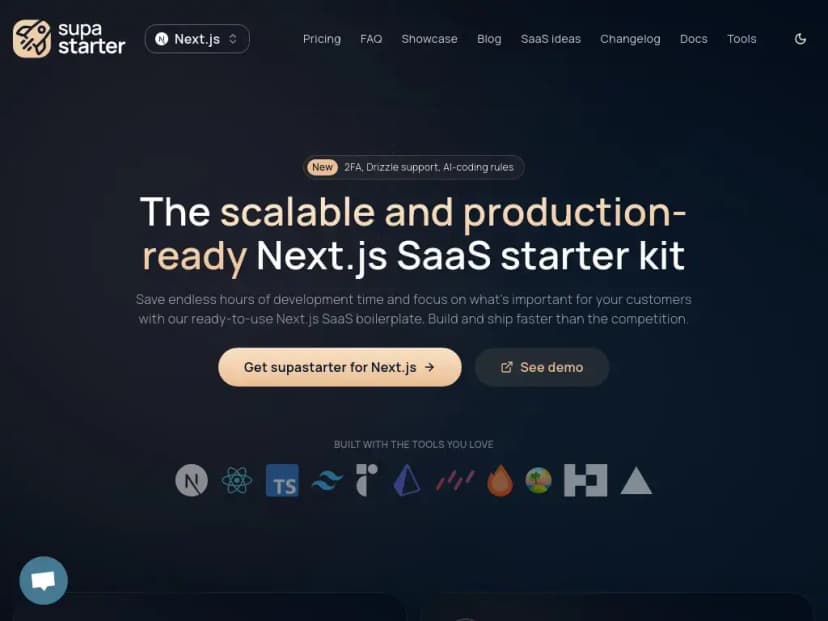
by Jonathan Wilke
The scalable and production-ready Next.js SaaS starter kit
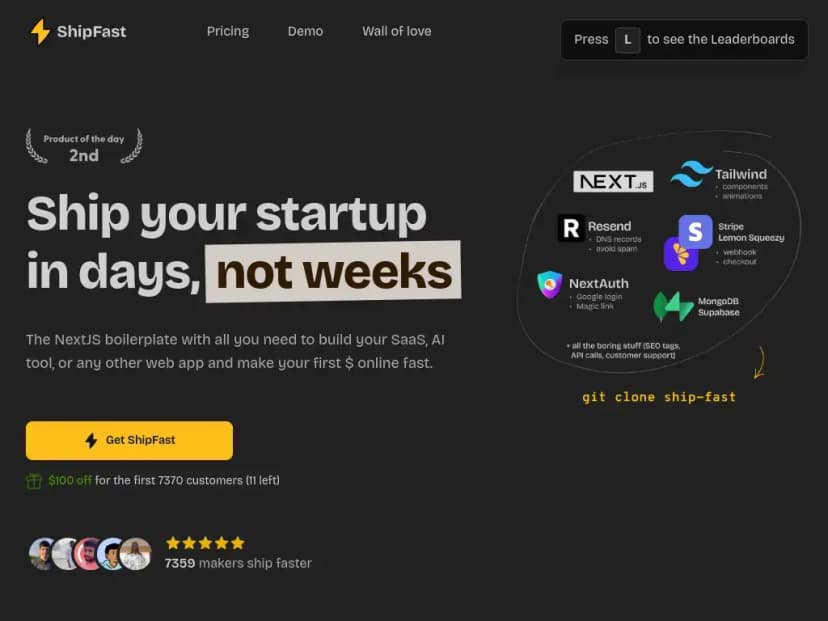
by Marc Lou
Next.js SaaS boilerplate with Stripe, auth, and everything you need to ship fast.
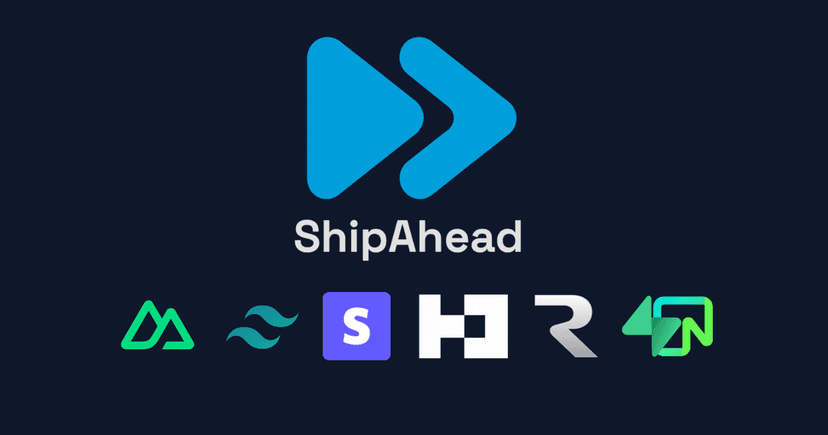
by Tom
A Nuxt 3 and Vue 3 SaaS boilerplate with authentication, billing, admin tools, and a PostgreSQL backend, built to help developers launch AI or subscription-based apps fast with clean, production-ready code.

by Serg
A Laravel-based SaaS starter kit that includes authentication, billing, team management, multi-tenancy, and an admin dashboard. It offers clean, modular code with built-in APIs, email templates, and SEO tools
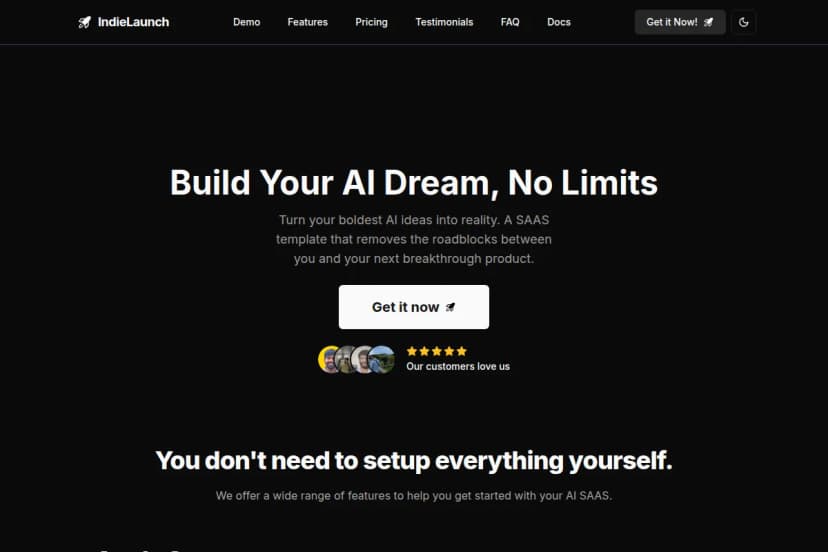
by RTR
It’s a production-grade AI SaaS template based on Next.js that comes with authentication, payments (Stripe, Lemon Squeezy, Dodo), AI model integrations (ChatGPT, Claude), blog/SEO setup, admin dashboard, and MongoDB wiring already configured.
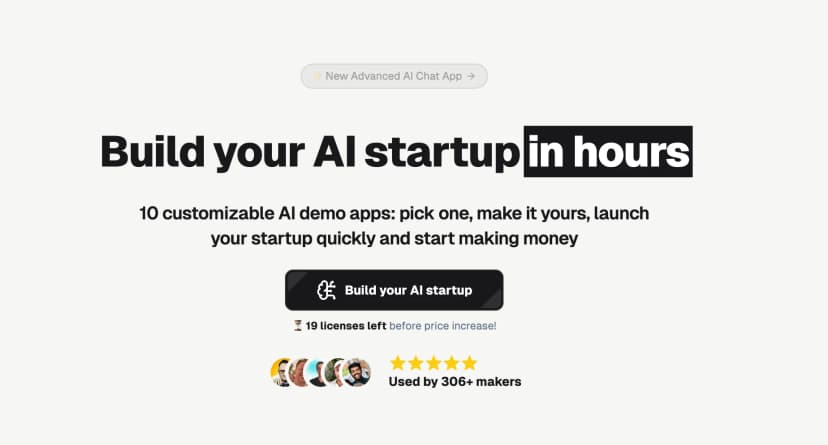
by Fekri
A full-stack AI starter kit built on Next.js that lets developers launch apps fast with authentication, payments, storage, and AI integrations preconfigured.

by Rishi Raj Jain
Production-Ready SaaS Starter Kits in astro, svelte and next.js
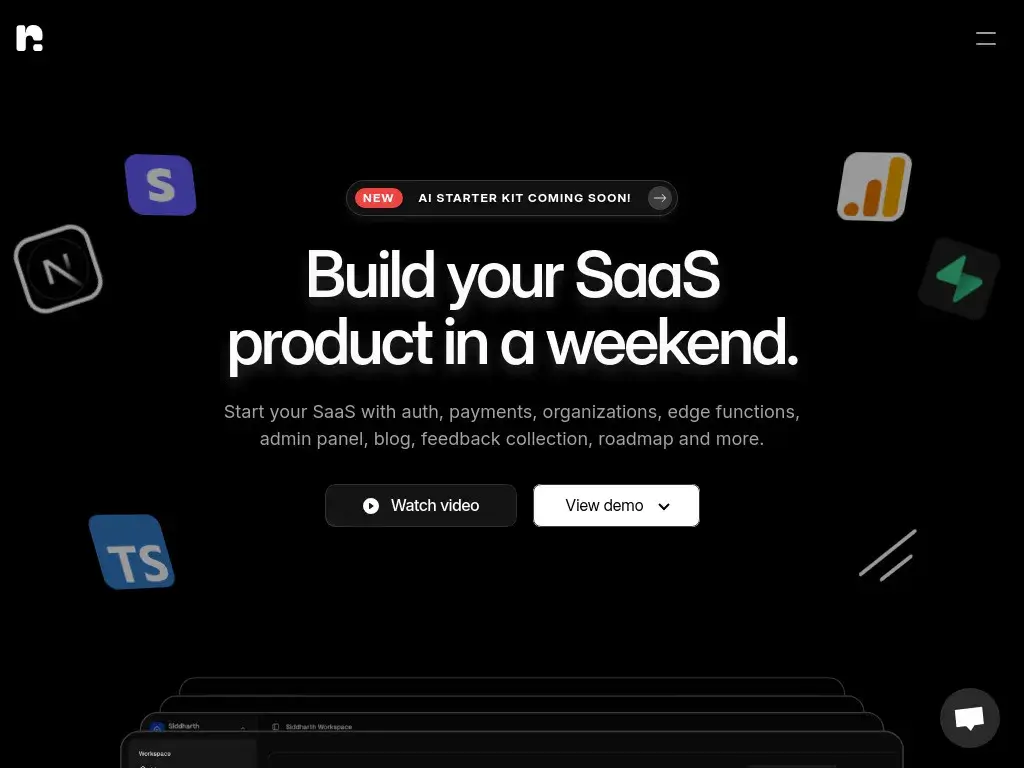
by Andrew Culver
Start your SaaS with auth, payments, organizations, edge functions, admin panel, blog, feedback collection, roadmap and more.
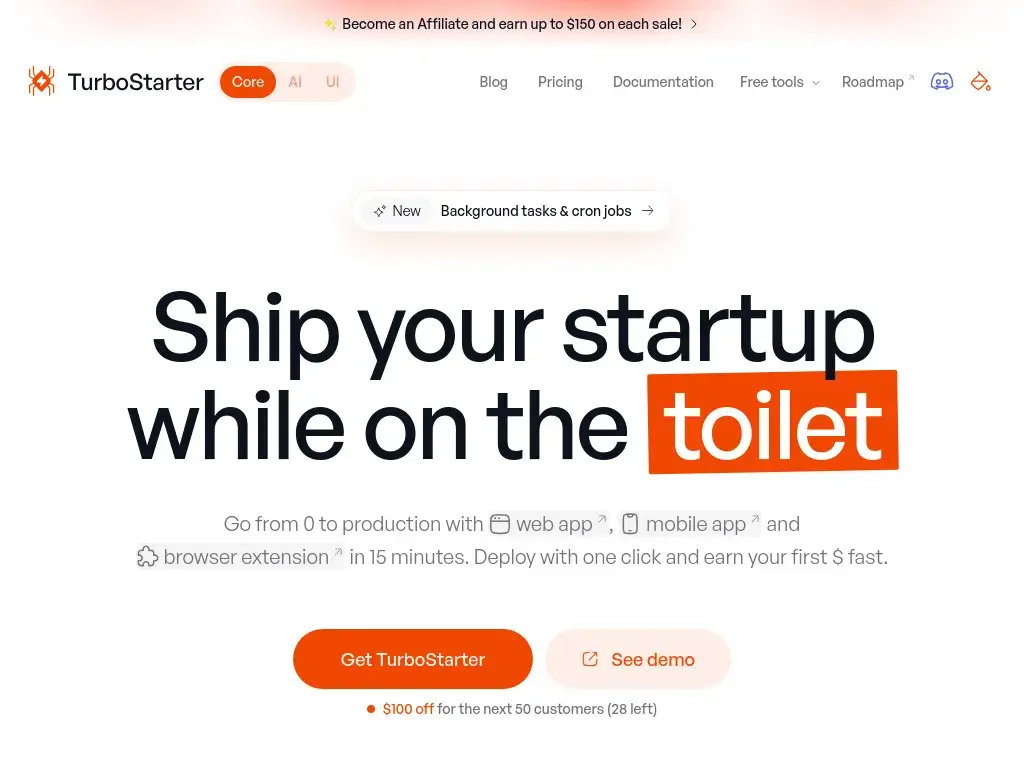
by StarterKit Team
Go from 0 to production with web app, mobile app and browser extension.
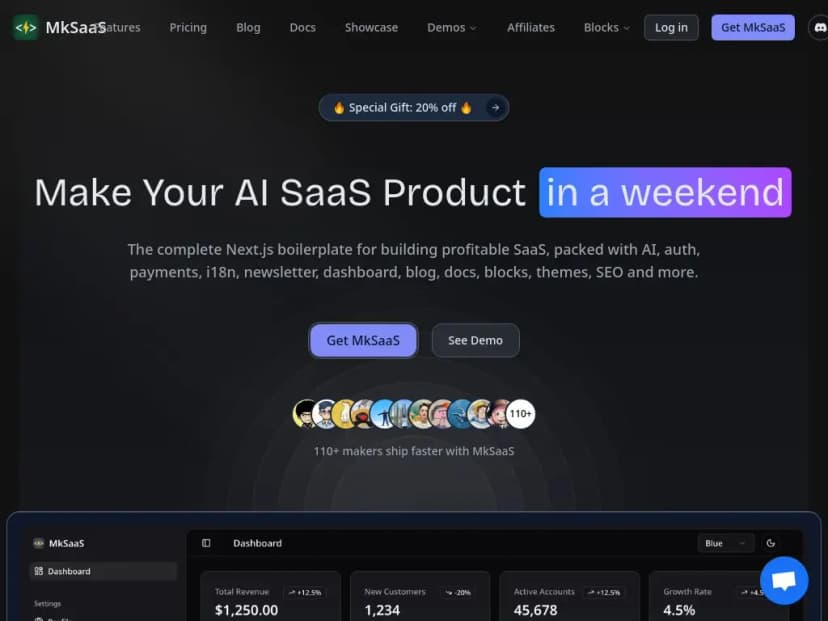
by Theo Browne
Next.js boilerplate for building profitable SaaS, packed with AI, auth, payments, i18n, newsletter, dashboard, blog, docs, blocks, themes, SEO and more.

by Eelco Wiersma
NextJS 15 boilerplate with all the features you need to build your SaaS, AI, or B2B application.

by Divjoy Team
Saas UI is a purpose-built toolkit for building high-quality apps. Start with our free component library and build fullstack apps with production-ready templates and starter kits.
What Are SaaS Boilerplates and Why Are They So Popular?
SaaS boilerplates are pre-built starter kits that include all the essential infrastructure needed to launch a Software-as-a-Service application. Instead of spending months building authentication, payments, user management, and database setup from scratch, you get a production-ready foundation that you can customize for your specific business needs.
Why SaaS Boilerplates Are Exploding in Popularity
Launch your SaaS product faster with our collection of the best Next.js SaaS Boilerplate and templates. Get all essential SaaS features like pre-built landing pages, components, authentication, billing integrations (Stripe), subscription management, customizable dashboards, analytics, Markdown, Sanity, Database, and more. These boilerplates provide a scalable, secure, best practices and performance-optimized foundation for your SaaS. Simplify your SaaS development with these production-ready boilerplates. Focus on your unique offering and let our boilerplates handle the essentials. Explore now and Start building today!
What You Get Out of the Box
A quality SaaS boilerplate typically includes these essential components:
Core Infrastructure
- User authentication & authorization
- Payment processing (Stripe/PayPal)
- Database setup & migrations
- Email notification system
- File upload handling
- API rate limiting
Business Features
- Admin dashboard
- User management
- Subscription management
- Analytics integration
- Multi-tenancy support
- Deployment configurations
The Competitive Advantage
In today's fast-paced market, speed to market is everything. While your competitors are still setting up basic infrastructure, you're already collecting user feedback and iterating on your core value proposition. This head start can be the difference between success and failure in the competitive SaaS landscape.
Modern SaaS boilerplates aren't just code templates - they're battle-tested solutions that have been refined through real-world usage. They include security best practices, performance optimizations, and scalability considerations that would take months to implement from scratch.
By choosing the right boilerplate, you're not just saving time - you're making a strategic decision to focus on what makes your product unique while leveraging proven infrastructure that's already been validated by thousands of successful SaaS applications.
The Most Popular SaaS Boilerplate Types in 2025
Different SaaS boilerplates cater to different needs and technical preferences. Here's what's driving the market in 2025 and why each type has its place.
Market Share Analysis
Based on our analysis of 500+ SaaS boilerplates and developer surveys, here's the current market distribution:
| Framework | Market Share | Growth Rate | Best For | Learning Curve |
|---|---|---|---|---|
| Next.js + React | 45% | +25% | B2B SaaS, SEO-critical apps | Moderate to steep |
| Laravel + PHP | 30% | +15% | Rapid prototyping, traditional web apps | Gentle to moderate |
| Nuxt.js + Vue | 15% | +40% | Content-heavy apps, rapid development | Gentle to moderate |
| Node.js API-First | 10% | +20% | Microservices, B2B integrations | Moderate to steep |
Why Next.js Dominates the Market
Next.js boilerplates hold 45% of the market share for several compelling reasons:
- Largest Ecosystem: Over 2.5 million weekly downloads and massive community support
- SEO Excellence: Server-side rendering and static generation for better search rankings
- Vercel Integration: Seamless deployment and hosting with zero configuration
- TypeScript Support: Built-in TypeScript support for better code quality
- Job Market: 60% of SaaS developer jobs require React/Next.js experience
- Scalability: Proven to handle millions of users with proper architecture
Market Trends 2025
The SaaS boilerplate market is evolving rapidly. Here are the key trends shaping the industry:
Rising Trends
- TypeScript-first boilerplates (+40% growth)
- AI integration ready (+60% growth)
- Mobile-first SaaS boilerplates (+35% growth)
- Multi-tenancy support (+25% growth)
- Edge computing integration (+45% growth)
- Real-time features (+30% growth)
Declining Trends
- jQuery-based boilerplates (-50% decline)
- PHP without frameworks (-30% decline)
- Vanilla JavaScript boilerplates (-20% decline)
- Server-side only solutions (-15% decline)
- Class-based components (-25% decline)
- Legacy authentication methods (-35% decline)
How to Choose the Right SaaS Boilerplate: Decision Guide
Selecting the perfect SaaS boilerplate can make or break your project. Here's a step-by-step guide to help you make the right choice based on your specific needs and constraints.
1. Assess Your Technical Requirements
Start by defining what features are essential for your SaaS. This will help you narrow down your options quickly.
| Feature Category | Must-Have | Nice-to-Have | Priority |
|---|---|---|---|
| Authentication | Login, register, password reset | Social login, 2FA, SSO | Critical |
| Payments | Stripe/PayPal integration | Multiple payment methods, invoicing | Critical |
| Database | User data, basic CRUD | Advanced queries, caching | Critical |
| Admin Panel | User management | Analytics, advanced controls | Important |
| Multi-tenancy | Not required | Tenant isolation, billing | Optional |
2. Evaluate Your Team's Expertise
Your team's technical skills should heavily influence your boilerplate choice. Here's a breakdown by expertise level:
React/Next.js Team
Recommended: Next.js boilerplates
- Largest ecosystem and community
- Excellent TypeScript support
- Best for SEO-critical applications
- Seamless Vercel deployment
- High job market demand
Vue.js Team
Recommended: Nuxt.js boilerplates
- Easier learning curve
- Convention over configuration
- Built-in TypeScript support
- Great for content-heavy apps
- Growing community
PHP/Laravel Team
Recommended: Laravel boilerplates
- Fastest to get started
- Built-in authentication
- Mature ecosystem
- Cost-effective hosting
- Great for rapid prototyping
3. Budget and Timeline Considerations
Your budget and timeline constraints will significantly impact your choice. Here's how to align your decision:
| Scenario | Budget | Timeline | Recommended Choice |
|---|---|---|---|
| Bootstrap Startup | $0-$5,000 | 2-4 weeks | Free Laravel or Next.js boilerplate |
| Funded Startup | $10,000-$50,000 | 4-8 weeks | Premium Next.js with support |
| Enterprise | $50,000+ | 8-16 weeks | Custom Next.js or Node.js API |
4. Red Flags to Avoid
Watch out for these warning signs when evaluating boilerplates:
- Poor Documentation: Missing or outdated setup instructions
- No Recent Updates: Last commit more than 6 months ago
- Unresponsive Maintainers: Issues and PRs go unanswered
- Outdated Dependencies: Security vulnerabilities in dependencies
- No Examples: Missing demos or working examples
- Poor Code Quality: Inconsistent coding standards
Step-by-Step Implementation Guide
Successfully implementing a SaaS boilerplate requires careful planning and execution. Follow this comprehensive guide to maximize your chances of success and avoid common pitfalls.
Phase 1: Pre-Implementation (Week 1)
- Requirements Analysis: Define your core features, user roles, and business logic
- Tech Stack Review: Ensure the boilerplate matches your team's expertise
- Environment Setup: Prepare development, staging, and production environments
- Team Training: Familiarize your team with the chosen framework and tools
- Design System: Plan your UI/UX customizations and brand integration
Phase 2: Customization (Weeks 2-4)
- Database Schema: Modify tables and relationships for your specific needs
- Authentication: Customize user roles, permissions, and registration flows
- UI/UX Updates: Implement your brand colors, logos, and design system
- API Integration: Connect third-party services (payments, email, analytics)
- Feature Development: Build your unique business logic and features
Phase 3: Testing & Deployment (Weeks 5-6)
- Quality Assurance: Comprehensive testing of all features and integrations
- Performance Optimization: Database queries, caching, and CDN setup
- Security Audit: Review authentication, authorization, and data protection
- Deployment Pipeline: Set up CI/CD, monitoring, and backup systems
- Go-Live Preparation: Domain setup, SSL certificates, and production monitoring
Common Mistakes to Avoid When Using SaaS Boilerplates
While boilerplates can accelerate development, many teams make avoidable mistakes that lead to technical debt, security issues, and maintenance nightmares. Learn from these common pitfalls.
❌ Technical Mistakes
- Not updating dependencies: Leads to security vulnerabilities and compatibility issues
- Ignoring code quality: Skipping code reviews and refactoring
- Over-customization: Modifying core boilerplate code instead of extending it
- Poor database design: Not adapting the schema to your specific needs
- Missing error handling: Not implementing proper error boundaries and logging
- Performance neglect: Not optimizing for your expected user load
⚠️ Business Mistakes
- Feature bloat: Adding unnecessary features that complicate the codebase
- Poor user research: Not validating features with real users
- Inadequate testing: Skipping user acceptance testing and QA
- Scalability planning: Not considering future growth and scaling needs
- Documentation gaps: Not maintaining proper documentation for your team
- Vendor lock-in: Becoming too dependent on specific boilerplate features
🚨 Security Red Flags
Never ignore these security considerations when using boilerplates:
- Hardcoded API keys or secrets in the codebase
- Missing input validation and sanitization
- Insecure authentication or session management
- Unencrypted sensitive data storage
- Missing HTTPS enforcement and security headers
- No rate limiting or DDoS protection